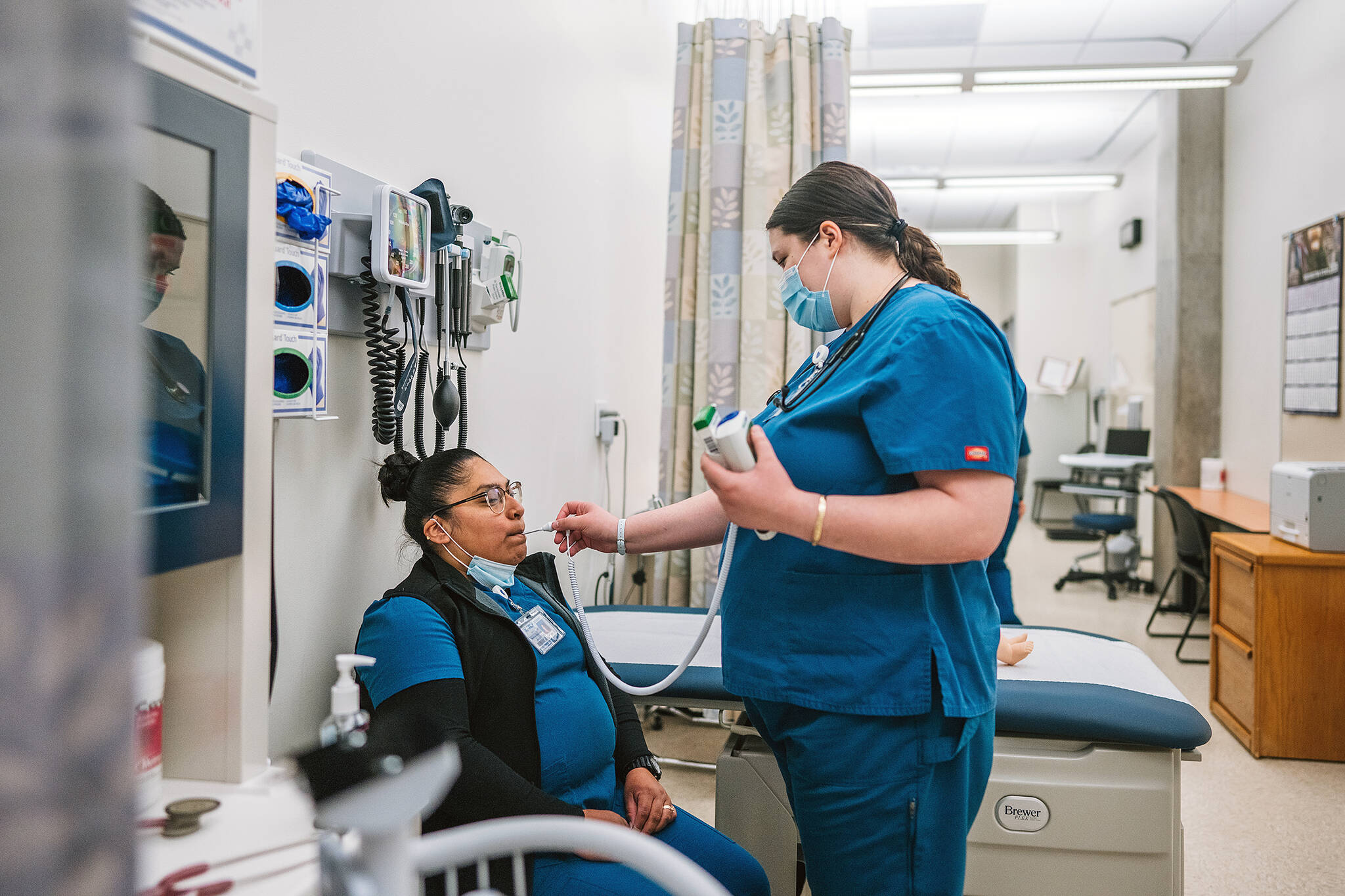Recovery — that’s the buzzword on the minds of local business owners. As the world begins to return to a pre-pandemic sense of normalcy, many of the barriers that kept local businesses from performing well have now subsided, and economic metrics now provide a clearer picture of success.
But why do vacancies persist despite a general lack of COVID-19 restrictions, especially in industries crucial to Grays Harbor County, such as hospitality and leisure?
That is a question Greater Grays Harbor, Inc. (GGHI) and other stakeholders in the local economy sought to address at the Tuesday, June 28, “State of Grays Harbor” signature event at the Rotary Log Pavilion in Aberdeen.
The event, which hasn’t been held in-person since 2019, included a presentation of GGHI’s regional Economic Vitality Index (EVI), which is commissioned economic research on workforce, real estate, and development in Grays Harbor County.
According to GGHI CEO Lynnette Buffington, the local economy is beginning to return to some “baseline levels,” especially when it comes to unemployment. There was a 4.6 percent decrease in the average unemployment rate of the county from 2020 to 2021, down to 7.1 percent from 11.7. This represents a return to pre-pandemic unemployment levels in Grays Harbor, she said, as the average unemployment rate was also 7.1 percent in 2019.
This places Grays Harbor County closer to the state’s average unemployment rate as well, but the region may soon plateau when it comes to employees reentering the workfore.
“When we start talking about the workforce, we really should remember the age and gender demographics of this community,” said Buffington.
According to the U.S. Bureau of Economic Analysis, the median age of Grays Harbor residents, based on 2019 estimates, is 44. This is older than the national median age of 38.1. As a popular retirement destination, especially out in the beachside communities, many of the newer residents of Grays Harbor do not contribute to the workforce.
Another issue plaguing Grays Harbor employers is a lack of qualified talent to fill vacancies, particularly in higher-wage industries.
“While we’re looking more like 2017, when you break it down and look at those high-wage jobs, construction is the only industry outpacing 2017 numbers,” said William Westmoreland, CEO of PacMtn Workforce Development Council. “What we’re hearing from employers, is that even though the economy is recovering, they’re hearing very few responses to the jobs they’re posting.”
Soft skills, qualifications, and appropriate work experience are insufficient among recent applicants, according to employers.
Besides filling gaps in the local workforce, higher-wage jobs are necessary to allow employees to afford the ever-rising cost of living in Grays Harbor.
According to PacMtn data, a single person needs $30,000 to live in Grays Harbor, and a single parent of one child needs $57,000. That means that 49 percent of household incomes in the county are below livable wage standards with industries, such as public administration and health care and social assistance pulling up the average despite understaffing.
“We really want to make sure that all the workforce development resources in the county are really providing the training that our workforce needs,” Westmoreland said.
Some of that workforce development may also come from Grays Harbor College (GHC), which has long been an essential pipeline for local employers.
“We have a lot of students that already have jobs before they finish, and in fact, in some cases, some students go to work before they’re done with the program and complete it later or don’t complete it at all and get into jobs with high wages,” GHC President Dr. Ed Brewster said.
The college has a specific focus on worker training and retraining, and has introduced new programs, such as a CDL class, to alleviate the scarcity of qualified workers in essential industries.
“Thirty percent of students complete a degree by their third year, which sounds low but is above the state average,” Brewster said. “We’re pretty happy with that, although we’ll continue to work on that.”
According to Brewster, 70 percent of jobs in the state will require a degree or credentials in the next five years, while only 27.2 percent of Grays Harbor residents have a degree.
Although the median earnings for GHC graduates have increased over the past few years, enrollment at the community college is down from 1,696 in the fall of 2019 to 1,236 in the fall of 2021. This decline has caused GHC to lose about 40 percent of its state funded enrollment.
“With our enrollment decline, obviously that has a direct impact on our budget and our ability to balance that budget,” Brewster said. “The college does need your help in referring students to us, and contacting us for needs you might have.”
Even with a workforce that meets the right demographical qualifications, other external factors are likely to hold Grays Harbor back from achieving a lower unemployment rate and meeting employee scarcities — chief among them being a lack of affordable housing.
“Recruitment for higher-level positions is becoming harder due to housing issues,” Buffington said. “The prices continue to rise. Every year we just get higher and higher, which is good for sellers but not so good for buyers.”
According to the EVI, the median average home price in the county grew by 23.4 percent in 2021 over 2020. More recent data from the Northwest Multiple Listing Service put the median price of a home at more than $500,000 in both Elma and Westport for the month of May.
“The hospitality industry is particularly hit by the lack of housing,” Buffington said. “We have restaurant owners buying houses to house their workforce. We have a lot of creativity happening, but it isn’t solving our housing problem.”



